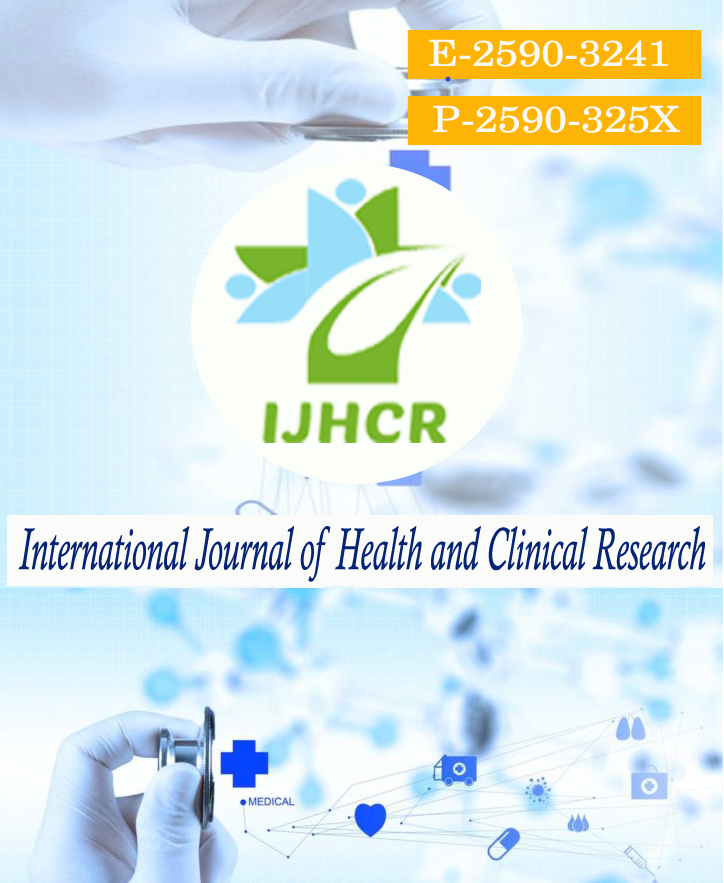A Comparative Study of Wound Infection Rates in Patients Receiving Pre OperativeIntraincisional Antibiotic Infiltration in Patients Undergoing Laparotomy for Perforation
Keywords:
Intraincisional, Laparotomy, Perforation & Infiltration.Abstract
Background and Method: This study was conducted in 100 patients (sample size) of intestinal perforation .in department of surgery at MYH Hospital and MGM Medical College, Indore (MP) after informed and written consent from the patient. A careful medical history suggest the source of the problem. Possible etiologies include the following. Penetrating injury or blunt trauma to the lower abdomen.NSAID intake or steroid intake.Treatment for ulcerative colitis or peptic ulcer.Abdominal pain, Vomiting, Hiccup History of travel in tropical area with symptom suggestive of typhoid fever.History of endoscopic procedure.History of chronic disease such as ulcerative colitis.Results: On post operative day 3, wound status of 80% controls was healthy, 12% controls had serous discharge and 8% controls had pus discharge present from the wound. The post operative wound status on day – 3 among both cases and controls was compared using chi-square test. The chi-square statistic is 4.6095. The p-value is 0.329758. The result is statistically not significant. On post operative day 5, wound status of 82% cases was healthy, 12% cases had serous discharge and only 6% cases had pus discharge present from the wound. On post operative day 5, wound status of 72% controls was healthy, 20% controls had serous discharge and 8% controls had pus discharge present from the wound. The post operative wound status on day – 5 among both cases and controls was compared using chi-square test. The chi-square statistic is 1.4675. The p-value is 0.832377. The result is statistically not significant. On post operative day 7, wound status of 86% cases was healthy, 8% cases had serous discharge and only 6% cases had pus discharge present from the wound.On post operative day 7, wound status of 56% controls was healthy, 6% controls had serous discharge and 38% controls had pus discharge present from the wound. The post operative wound status on day – 7 among both cases and controls was compared using chi-square test. The chi-square statistic is 36.4104. The p-value is < 0.00001. The result is statistically significant.Conclusion: Both intra-incisional and intravenous ceftriaxone preoperatively as compared to the patients that received just intravenous ceftriaxone. The result is not significant during the early post operative period at day 3 and day 5. But the signicantIn our study there was significant decrease in occurrence of SSI among the patients result at day 7 is suggestive that intra-incisional with intravenous ceftriaxone prophylaxis is more effective than intravenous ceftriaxone aalone for reducing SSI. Preoperative intra incisional antibiotics decreases the pace of SSI on account of the higher concentrations attained at the entry point site.
Downloads
Published
How to Cite
Issue
Section
License
Copyright (c) 2021 Shashi Shankar Sharma, Prabhudayal Chouhan, Suneel Ahirwal, Avinash Gautam

This work is licensed under a Creative Commons Attribution 4.0 International License.






 All articles published in International Journal of Health and Clinical Research are licensed under a
All articles published in International Journal of Health and Clinical Research are licensed under a 